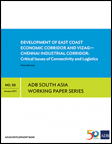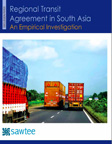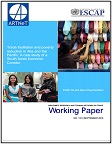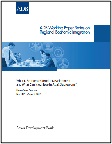Economic Corridor Development Results
Economic corridor development (ECD) involves the creation of an efficient multimodal transport network supported by quality infrastructure, logistics, and policy framework for ease of doing business, and distribution networks that link production centers, urban clusters, and international gateways, beyond the narrow space of a transport route. Individual SASEC countries are pursuing ECD to bring economic transformation and inclusive growth. SASEC support for economic corridors includes a regional approach in promoting synergies and identifying complementarities between national economic corridors and SASEC member countries, and improving cross-border links to optimize economic corridor investments.
ECD BANGLADESH
REPORTS
total items: 4The East Coast Economic Corridor (ECEC)—India’s first coastal corridor—is an integrated economic development initiative that is expected to help pursue industrialization and integrate domestic companies into the global value chains of Southeast Asia and East Asia. Its development will start with Vizag–Chennai Industrial Corridor (VCIC), which covers about 800 kilometers and includes several ports and major industrial centers. This paper discusses strategies to consider when trying to improve shipping and air connectivity in the ECEC and Vizag–Chennai Industrial Corridor (VCIC). It stresses the importance of infrastructure development and regulatory reforms that facilitate increased connectivity.
Source: Pritam Banerjee
This discussion paper published by the South Asia Watch on Trade, Economics and Environment assesses the potential gains of a sub-regional transit arrangement and the removal of other border-trade barriers, particularly the eastern South Asia sub-region (Bangladesh, Bhutan, India and Nepal). It also discusses the link between transit and trade flows, provides profiles of intra-regional transit trade and current transit arrangements in South Asia, and identifies efficient regional transit corridors using linear programming or the Data Envelopment Analysis model.
Source: Prabir De and Arvind Kumar
This study assesses the potential impact of trade facilitation on poverty reduction in the region under SAARC Corridor 1, which is one of the leading corridors in South Asia and handles overland trade between Bangladesh, India and Pakistan. Poverty reduction depends on decreasing trade barriers through better trade facilitation and improved infrastructure.
Economic corridors connect economic agents along a defined geography. They provide important connections between economic nodes or hubs that are usually centered in urban landscapes. They do not stand alone, as their role in regional economic development can be comprehended only in terms of the network effects that they induce.
Source: Hans-Peter Brunner




